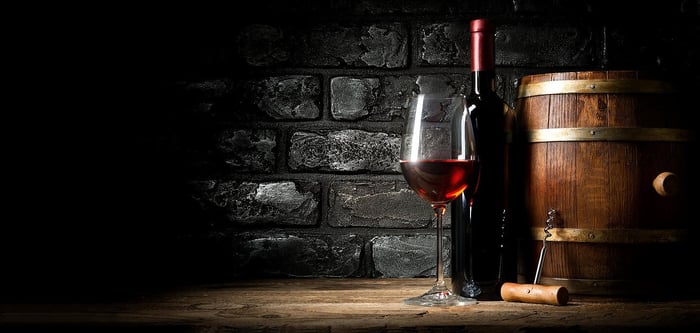In recent years, wine has made a remarkable entry into the world of alternative investments. This emotionally charged asset has all the necessary characteristics to thrill not only amateurs and collectors but also investors. In particular, it offers attractive returns and interesting diversification potential.
Investing in wine
The traditional approach to investing in this market is “buy-and-hold”. It is based on the purchase of bottles, generally when they are put up for sale on the primary market, and is concluded, when the wine reaches full maturity, by taking a financial profit - via a resale on the secondary market, or hedonist - via the pleasure of consumption.
In Bordeaux, the primary market operates on a principle similar to that of futures contracts. In the spring, following the harvest of the last vintage, the wines, which are still resting in barrels, are offered as a first-run initially to buyers through traders and merchants. Payment is made with the order and delivery takes place once the wines have finished maturing nearly 18 months later.
In the other wine-growing regions, wines are generally sold once bottled; through an ad-hoc mix of direct sales to the estate and through intermediaries. The secondary market is decentralized and fragmented.
Overall, the wine market is characterized by its complexity, relative opacity and low liquidity. These elements have considerable implications; especially for inexperienced investors. They make valuation a complicated exercise and can make it difficult to sell a wine quickly at a price equivalent to its estimated value. It also means that it is difficult and expensive to implement strategies that go beyond the simple “buy and hold”.
Wine Economics & Finance Course at EHL
The goal of this course is to provide students with the necessary tools to examine the functioning of the market for fine wines and to rigorously analyze the performance of a fine wine investment. Students will first explore the world most renowned wine producing regions and study the specificities of the wines produced in each of these regions. They will study how fine wines are initially released on the market (primary market) and how they are subsequently traded (secondary market).
Students will then review the determinants of wine prices and investigate the performance of an investment in fine wines. This analysis will include a review of financial tools that are commonly used for performance assessment. In the last part of the course, students will have to deal with specific, yet crucial, issues that are related to wine investments.

Investing in a fund
The difficulties discussed above certainly do not call into question the attractiveness of wine as an investment, but show the need to have an in-depth knowledge of the market.
This explains the development of specialized funds that now allow almost anyone to position themselves on this market. However, their management fees, similar to most alternative assets, make them expensive. It is therefore essential to analyze the value-added brought by the manager. A recent study shows that the strategies used do not always justify these fees, since most funds have difficulty beating their benchmark. This study also highlights the importance, from a risk management perspective, of studying how the fund manages its liquidity and values its positions.
Current Context
The market for fine wines has been extremely dynamic during the last two to three years:

Bordeaux has finally recovered after almost five years of correction. The arrival of two great vintages (2015 and 2016) on the market played a driving role for the region. Prices are now close to their highs of early 2011.
 Burgundy has continued its upward trend – which started more than ten years ago. The rarity of these wines is reinforced by the fact that recent vintages have been highly qualitative but not very quantitative. Thus the imbalance between demand and supply has prompted further price increases.
Burgundy has continued its upward trend – which started more than ten years ago. The rarity of these wines is reinforced by the fact that recent vintages have been highly qualitative but not very quantitative. Thus the imbalance between demand and supply has prompted further price increases.
 At the same time, several wine regions that were in the shadow of Bordeaux and Burgundy have significantly gained in notoriety. This is particularly true in Italy and notably in the Piedmont, where some wines have seen their prices being multiplied by two or three in just five years. Customers appreciate the classicism of these wines.
At the same time, several wine regions that were in the shadow of Bordeaux and Burgundy have significantly gained in notoriety. This is particularly true in Italy and notably in the Piedmont, where some wines have seen their prices being multiplied by two or three in just five years. Customers appreciate the classicism of these wines.
Ten years ago the market only had eyes for powerful and concentrated wines made in a modern style, today the key words are finesse and authenticity.
Low liquidity (a paradox, of course), difficult to value, complex but exciting; wine definitely represents the quintessence of the alternative investments.
Access the full study:





